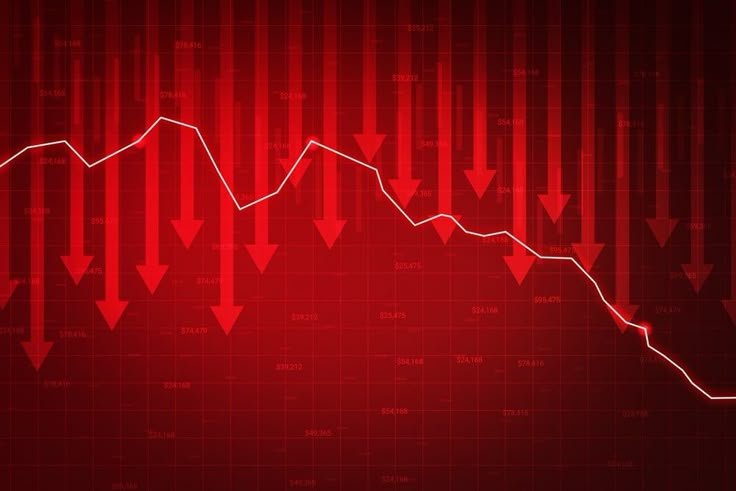Gold prices in India are rapidly approaching the historic Rs 90,000 per 10-gram level after breaching the $3,000 per ounce mark in the international markets. Investors are flocking to gold as a safe-haven asset due to heightened uncertainty and fears of an economic recession in the United States. The demand for gold-backed exchange-traded funds (ETFs) has risen sharply, further propelling prices to record levels.
On March 17, 2025, the India Bullion and Jewellers Association reported gold (999 purity) trading at approximately Rs 88,100 per 10 grams. The surge in gold prices over the past week reflects a 3 percent increase, largely driven by global economic uncertainties, trade tensions, and expectations of a more accommodative monetary policy from the U.S. Federal Reserve.
Key Factors Fueling the Gold Rally
1. Impact of U.S. Economic Policies and Inflationary Concerns
The recent imposition of tariffs by the U.S. administration under former President Donald Trump has sparked inflation concerns, driving investors toward gold as a hedge. Higher tariffs on imported goods have disrupted global supply chains, escalating costs for consumers and businesses alike. The anticipation of sustained inflationary pressures has strengthened gold’s appeal as an asset that preserves purchasing power in times of economic turmoil.
Additionally, fears of a slowdown in economic growth have prompted central banks to consider looser monetary policies. Market participants expect the U.S. Federal Reserve to lower interest rates to stimulate economic activity, making non-yielding assets like gold more attractive. As a result, gold prices have soared, breaking multiple records in 2025.
2. Surging Demand for Exchange-Traded Funds (ETFs)
Gold-backed ETFs have experienced a surge in demand, with investors increasing allocations to mitigate risks associated with stock market volatility. The growing uncertainty in equity markets has prompted institutional and retail investors to diversify their portfolios by adding gold exposure. A significant inflow into gold ETFs has supported the metal’s price momentum, pushing it past the crucial $3,000 per ounce level in global markets.
3. Political Uncertainty and Global Geopolitical Risks
The ongoing geopolitical tensions between major economies, including the U.S.-China trade dispute and the Russia-Ukraine conflict, have heightened investors’ anxiety. Political uncertainty often leads to increased demand for safe-haven assets, and gold remains the primary beneficiary. As countries engage in economic battles, the lack of clarity over future trade agreements has strengthened the case for gold as a reliable store of value.
In India, domestic political events have also contributed to price movements. Elections, government policy changes, and fiscal budget allocations influence market sentiment, reinforcing the demand for gold during uncertain times.
4. Declining U.S. Dollar Strength and Interest Rate Cuts
The U.S. dollar has weakened against major global currencies due to the anticipation of rate cuts by the Federal Reserve. A softer dollar makes gold more affordable for investors holding other currencies, boosting global demand. The inverse relationship between the dollar and gold continues to drive bullish sentiment, attracting significant capital inflows into the precious metal.
5. Seasonal and Cultural Factors in India
India remains one of the largest consumers of gold, with demand deeply rooted in cultural and traditional practices. The wedding season and upcoming festivals have fueled domestic buying, adding further support to price increases. Jewelers have reported strong demand, despite the high prices, as buyers anticipate even higher rates in the near future. The perception of gold as a long-term investment has strengthened, compelling Indian households to purchase the metal despite soaring costs.
Historical Perspective: Comparing Gold’s Rally to Previous Highs
The surge in gold prices in 2025 resembles previous historical rallies witnessed during periods of economic distress. The 2008 financial crisis and the COVID-19 pandemic in 2020 saw similar movements in gold prices as investors sought refuge in the metal. The unprecedented levels seen in 2025, however, reflect a combination of factors, including inflationary fears, geopolitical tensions, and monetary policy shifts, making this rally unique in its magnitude.
Gold’s role as a hedge against economic instability remains evident, with central banks across the globe increasing their gold reserves. Several countries, including China and India, have been accumulating gold to diversify their foreign exchange reserves, contributing to the ongoing price surge.
Future Outlook: Will Gold Continue to Rise?
Several analysts predict that gold may continue its upward trajectory if the underlying factors remain unchanged. Inflation concerns, potential interest rate cuts, and geopolitical instability will dictate future price movements. Investors and market participants will closely monitor policy decisions by the U.S. Federal Reserve and other central banks for further cues on gold’s price direction.
Domestically, if the Indian rupee weakens against the U.S. dollar, gold prices in India could witness additional gains. Import duties and taxes imposed on gold imports will also play a critical role in determining the final price consumers pay in the local market.
While gold prices are nearing record highs, potential downside risks exist. A sudden shift in Federal Reserve policy, a resolution in trade disputes, or an improvement in global economic conditions could trigger profit-taking, leading to a temporary pullback in prices. However, long-term fundamentals indicate strong support for gold, making it a preferred asset for wealth preservation.
Conclusion
Gold’s relentless rally in 2025 reflects investors’ flight to safety amid growing economic and political uncertainties. The surge past $3,000 per ounce in global markets and the approach toward Rs 90,000 per 10 grams in India highlight gold’s enduring role as a hedge against inflation, monetary easing, and geopolitical risks. The demand for gold ETFs, coupled with seasonal and cultural influences, continues to drive strong domestic buying in India.
As market participants navigate uncertain times, gold’s status as a reliable store of value remains intact. While short-term fluctuations are inevitable, the broader trend suggests that gold will continue to command attention as an essential asset in investment portfolios. Investors will remain watchful of key macroeconomic indicators and central bank actions to assess the future trajectory of gold prices. With the current momentum, the prospect of gold breaking new records remains a strong possibility.




